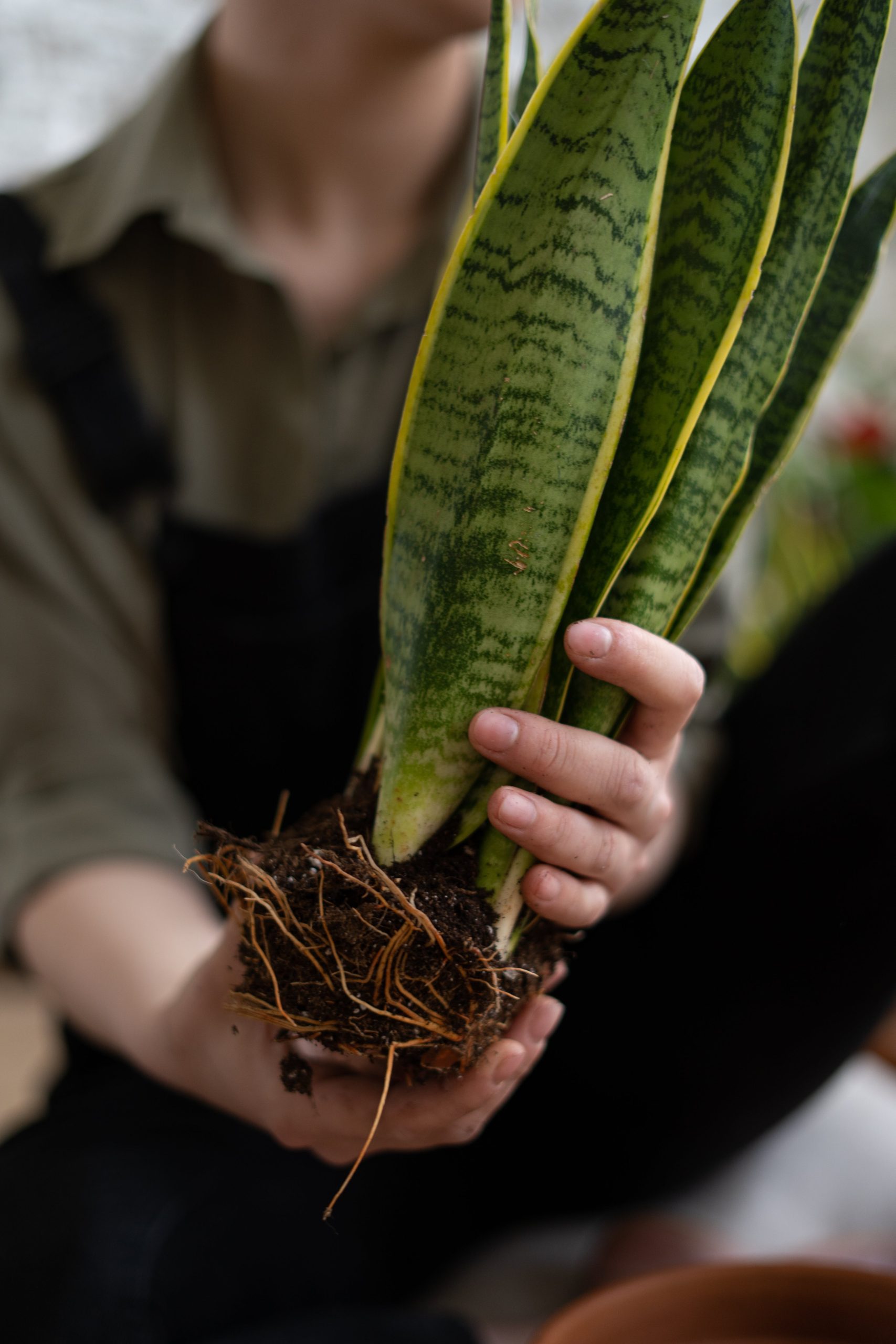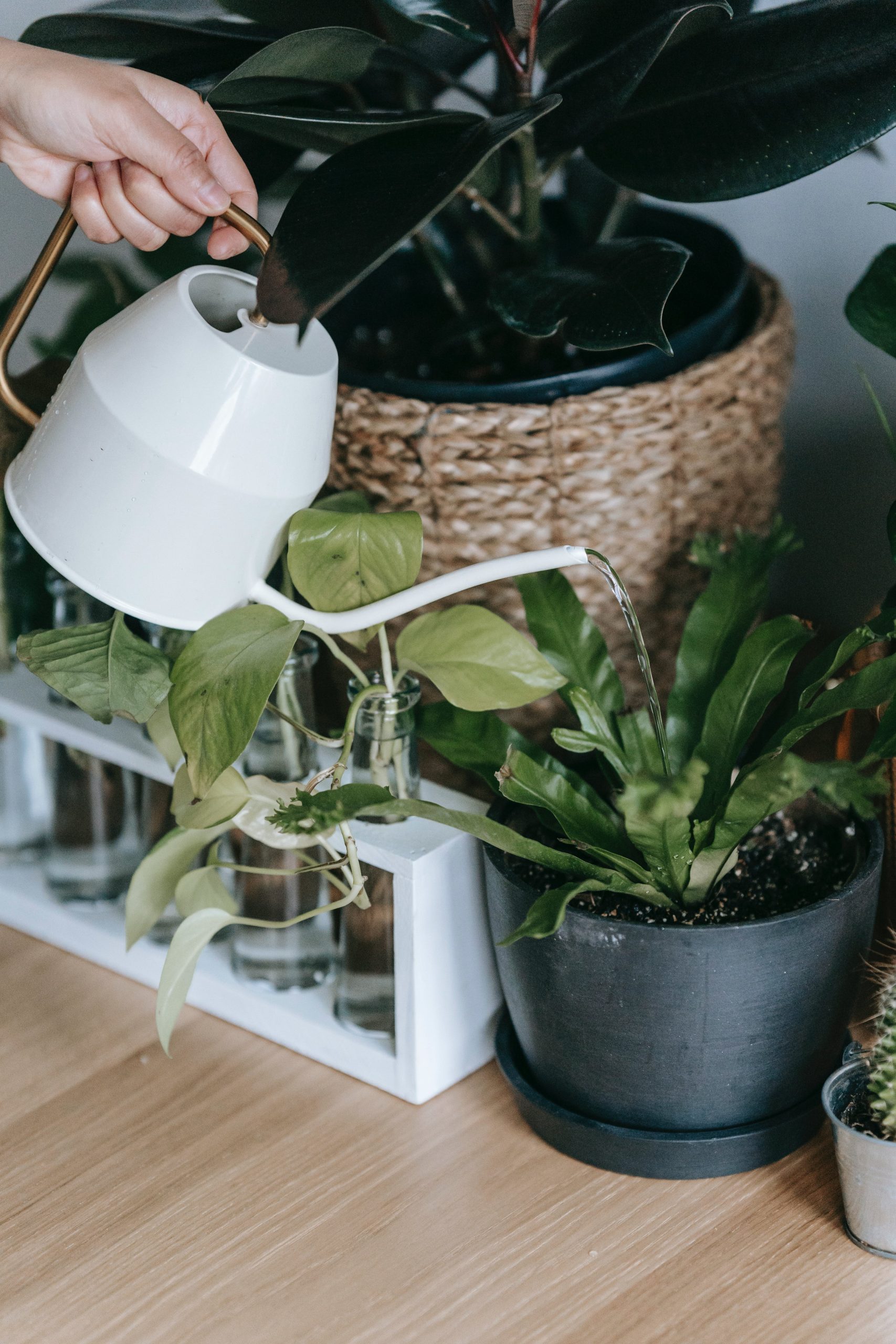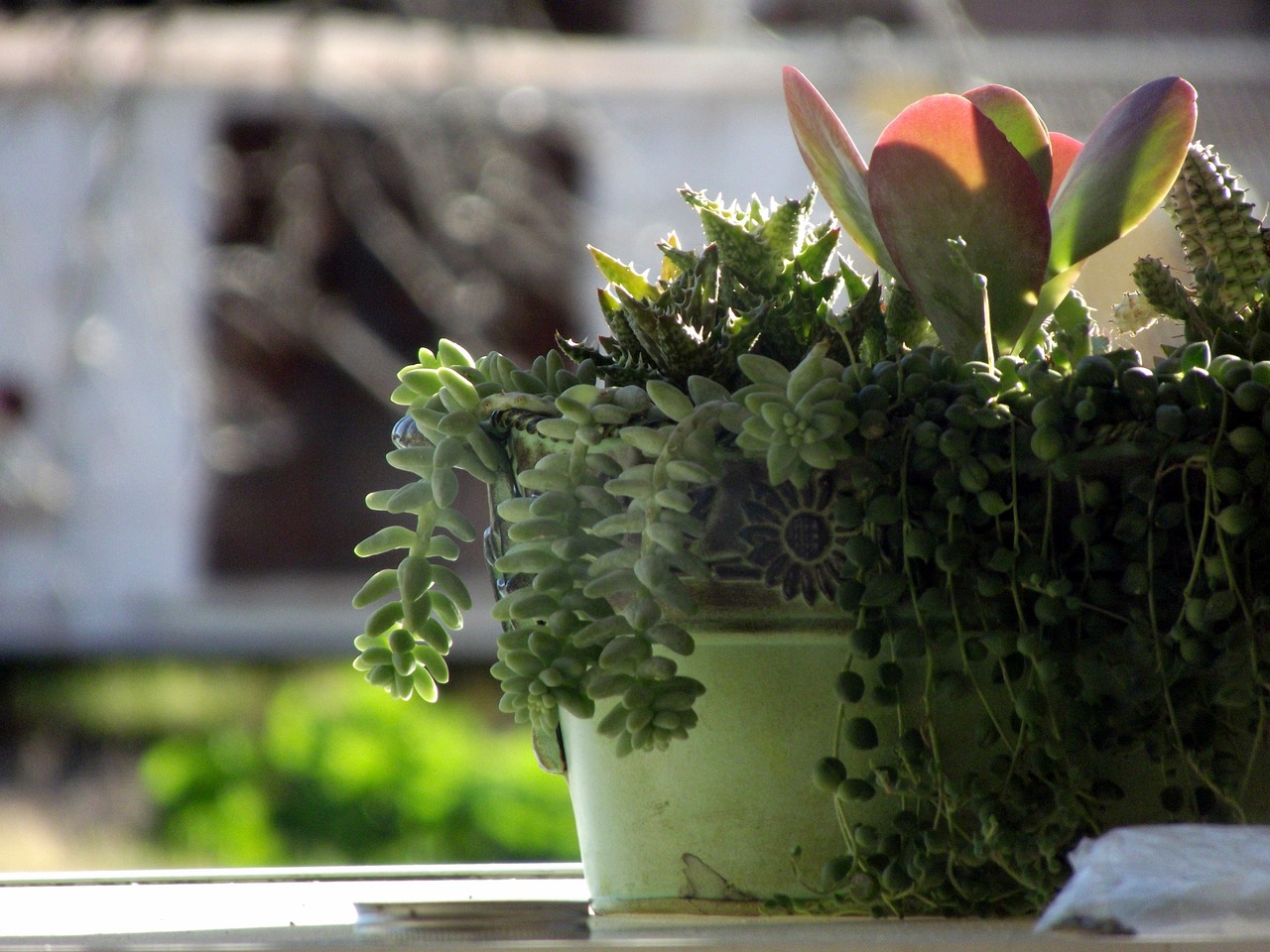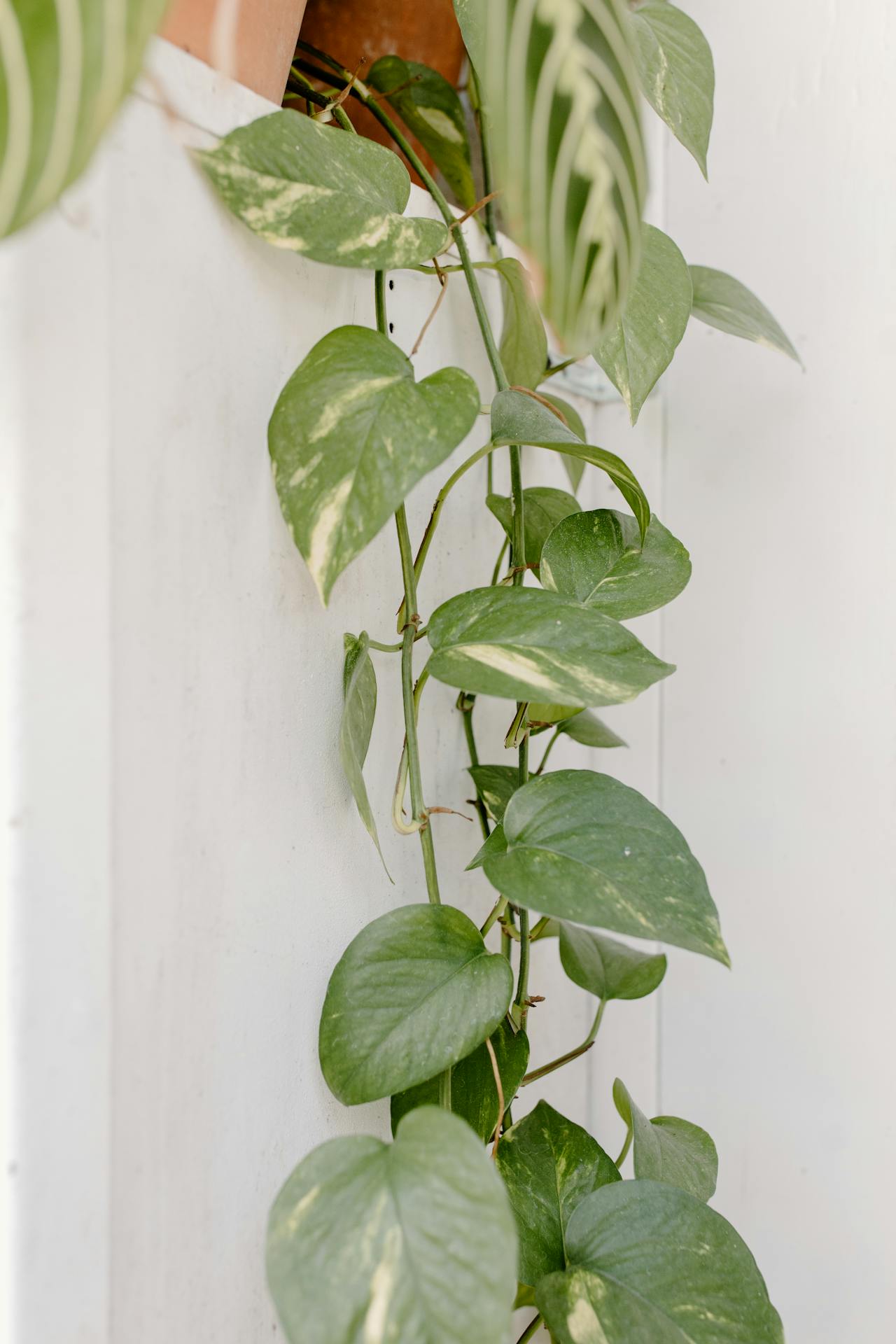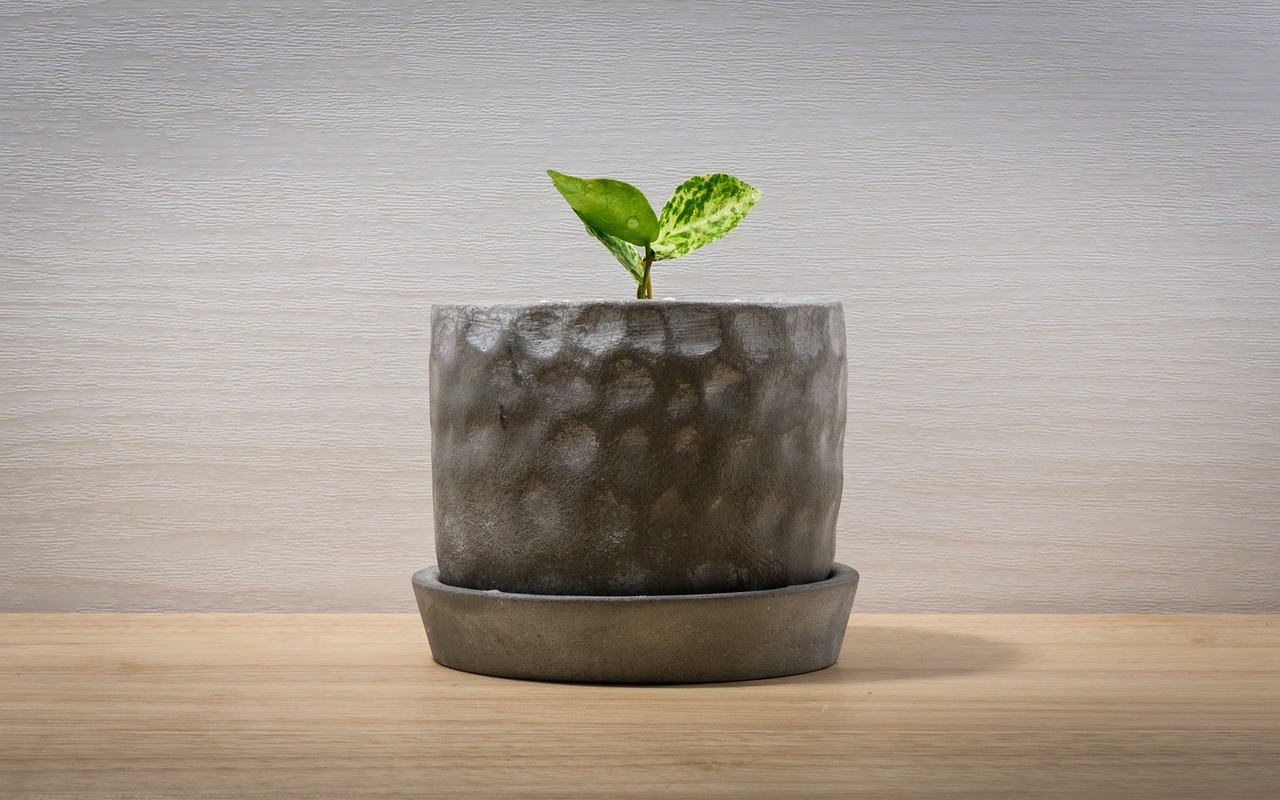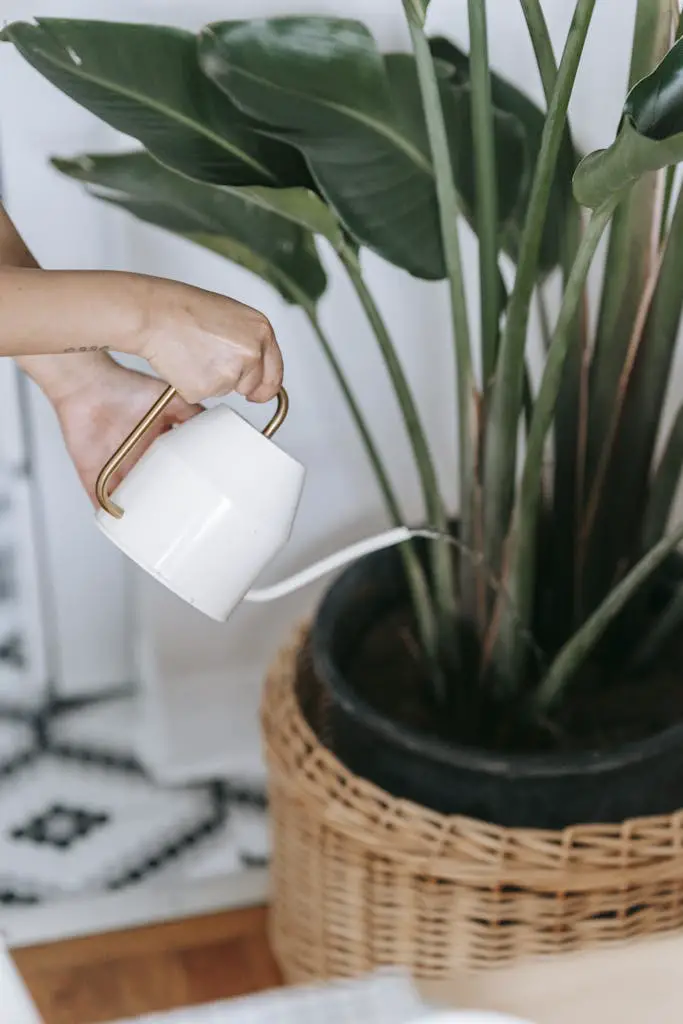
Optimal indoor plant growth depends on several key factors
Soil
Good-quality, well-draining soil is essential for healthy plant growth. Choose a potting mix formulated for indoor plants, or create your own by mixing potting soil with perlite or vermiculite to improve drainage.


Nutrients
Indoor plants require essential nutrients like nitrogen, phosphorus, and potassium for healthy growth. Fertilize your plants regularly during the growing season with a balanced, water-soluble fertilizer diluted to half strength.
Air Circulation
Adequate air circulation helps prevent pests and diseases and promotes healthy growth. Ensure there is some airflow around your plants by occasionally opening windows or using a fan on low speed.


Pot Size and Drainage
Choose pots with drainage holes to prevent water from accumulating at the bottom, which can lead to root rot. Additionally, select an appropriately sized pot that allows room for the plant’s roots to grow.
Light
Plants need light for photosynthesis, the process by which they convert light energy into chemical energy to fuel their growth. Different plants have different light requirements, but in general, most indoor plants thrive in bright, indirect light. Consider placing plants near windows or using artificial grow lights to supplement natural light.


Temperature
Most indoor plants prefer temperatures similar to those comfortable for humans, typically between 65°F to 75°F (18°C to 24°C) during the day and slightly cooler at night. Avoid placing plants near drafts, heaters, or air conditioning vents, as extreme temperature fluctuations can stress them.
Humidity
Many indoor plants, especially tropical species, prefer higher humidity levels. You can increase humidity by misting the leaves regularly, using a humidifier, or placing a tray filled with water and pebbles beneath the plant’s pot.


Watering
Proper watering is crucial for plant health. Overwatering can lead to root rot, while underwatering can cause wilting and stunted growth. The frequency of watering depends on factors such as the plant species, pot size, and environmental conditions. Always check the soil moisture before watering and adjust accordingly.
Plant Care and Maintenance Posts
Common House Plant Diseases & How to Treat Them
Common House Plant Diseases & How to Treat Them There are myriad of challenges that can afflict …
How to Clean Dust On Plant Leaves
How to Clean Dust on Plant Leaves Regularly removing dust from your plant’s leaves is a crucia…
How to Prevent and Treat Root Rot on Houseplants
How to Prevent and Treat Root Rot on Houseplants Preventing and addressing root rot in indoor plants…
A Guide to House Plant Watering
House Plant Watering Is your plant underwatered or overwatered? Sometimes it can be tricky to tell. …
How to Correct Rootbound Plants
How to Correct Rootbound Plants Dealing with a rootbound plants, where the roots become tightly pack…
How To Care for Indoor Cacti and Succulents
Cacti and Succulents: Indoor Care How do I care for cacti and succulents indoors? Caring for cacti a…
Winterizing Indoor Plants
How do I winterize my indoor plants? Winterizing indoor plants is essential to ensure their health a…
Common Signs of Plant Stress
Common Signs of Plant Stress Understanding and addressing signs of stress in houseplants is essentia…
Low-Light House Plants: Challenges & Recommendations
Low-Light House Plants: Challenges & Recommendations Navigating the challenges posed by low-ligh…
How to Train a Vine Plant to Climb?
Training a Vining Plant to Climb How do I train a vine plant to climb? Training a vine plant to clim…
Guidelines for Indoor Pot Drainage
When considering indoor pot drainage, it’s important to strike a balance between providing ade…
Watering Houseplants: The Different Water Options
What type of water should I use for watering my houseplants? The type of water you should use for wa…
Choosing the Ideal Pot Size for Houseplants
The ideal pot size for indoor plants needs to strike a balance between providing ample space for hea…



